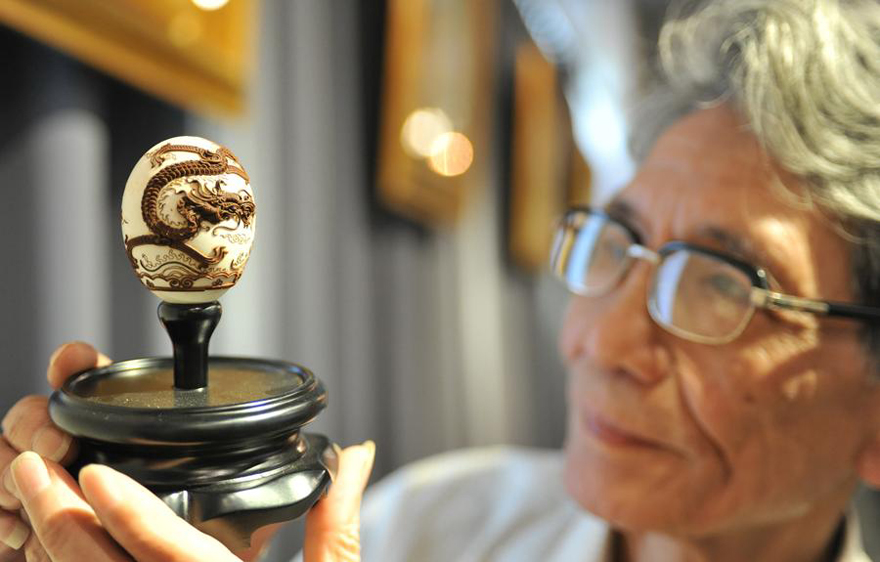 |
|
Handicraftsman Cai Shuikuang shows a work of lacquer thread sculpture in Xiamen, Southeast China's Fujian province. Cai Shuikuang is the 12th generation disciple of Cai Lacquer Thread Sculpture, which has a history of more than 300 years and has been listed as the state-level non-material cultural heritages in China. [Photo/Xinhua]
|
The next step is to make the lacquer threads. Raw materials include brick powder, lacquer and tung oil. The Cais always use old bricks that have become brittle and loose from hundreds of years of erosion. After soaking them in water for several days, the bricks are ground into fine powder. Mixed with the sap of lacquer trees and boiled tung oil, an adhesive and elastic dough forms, and is then rolled into threads. The length and thickness of a thread depends on a craftsman's style. The most delicate is as thin as a hair.
The artisan then picks up a piece of thread and twines it on a chopstick. With a chopstick on one hand and a small brush pen on the other, the artisan carefully uncoils the lacquer thread to the desired location on the figure, pressing and adjusting it gently with the brush pen in the process. A sharp bamboo blade on the other side of the pen is used to cut the thread. The lacquer thread seems to have magic power in an artisan's hands and slowly transforms into a dragon, phoenix, or peony on the figurine's garments.
We Recommend:
